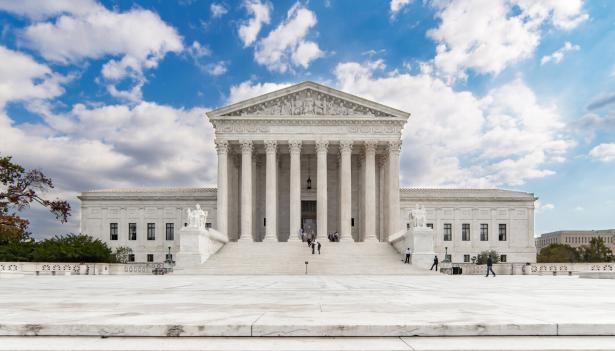In the coming weeks, President Biden is expected to convene a commission to consider reforms to the Supreme Court in response to a broken confirmation process.
A number of promising ideas are likely to be on the table, from term limits, to expanding the number of justices, to partisan balance requirements. Each of these proposals warrants close study, but there are also other transformative ideas that have gotten little attention. If I had to pick one, it would be this: regardless of the Court’s size, give each president exactly two seats to fill per four-year term that expire if left unused. Such a system could help to defuse the intense politicization that now surrounds every nomination and risks real damage to the Court’s long-term public legitimacy.
The Supreme Court confirmation process clearly needs reform. Most recently — and notoriously — Republican senators lurched from blocking Merrick Garland’s confirmation in 2016, claiming that it was too close to the presidential election, to rushing through a vote for Justice Amy Coney Barrett mere days before the 2020 election. It was an exercise in raw politics that cemented a conservative super-majority on the Court.
There are many factors that have gotten us to this point, but the vicissitudes of vacancies are a major part of the story. Supreme Court vacancies are high stakes and often unpredictable, and they function as a zero-sum game. A vacancy on the Court that’s filled by Biden means a seat that isn’t available for his successor to fill. It’s reasonable to wonder whether future Supreme Court nominees will simply be unconfirmable when the presidency and Senate are controlled by different parties. This is particularly so when a justice who is not ideologically aligned with the president dies or retires.
It doesn’t have to be this way. Giving each president two seats to fill during a four-year term would decouple the nomination process from the departure of sitting justices: a president would get two appointments regardless of whether three justices leave the bench or none at all. (University of Chicago law professor Daniel Hemel suggested a version of this idea in a recent journal article.)
To discourage obstruction, these two seats should “open” in the first year of the president’s term, and they should expire if they are unfilled at the end of four years so as not to provide a windfall to a future president. As new justices join the bench and sitting justices depart, the size of the Court would fluctuate and likely stay above the current nine justices, and it would include periods with an even number of justices. Over the course of 20 years the Court would likely expand to somewhere in the range of 15 justices. Critically, such a change could be implemented without a constitutional amendment.
This kind of reform would be a disruption to the system in the best sense of the word. Predictability around Supreme Court nominations — coupled with the inability to hold over seats for new presidents — substantially reduces the incentives for partisan gamesmanship during the confirmation process.
It’s not a complete fix: motivated partisans could still refuse to confirm a president’s nominees. But obstructing a president’s nominees over four years (and two Senate classes) would be far more politically difficult than the status quo, and the fact that seats can’t be held over for future presidents also means that obstruction would bring lower returns. For these reasons, such a reform has the potential to set the stage for a “reset” away from the partisan hardball that’s characterized the confirmation process in recent years, and it could open the door for the establishment of new shared norms.
Perhaps the most jarring element of such a change would be a Court with a fluctuating size. But while this would be a cultural shift, there is nothing sacred about a nine-member court or an odd number of justices. The Supreme Court itself has varied in size and had an even number of justices for brief periods, and such models are a common feature in many other countries.
In the United Kingdom, for example, the Supreme Court is set at 12 justices and meets in panels made up of a subset of the court. Indeed, a larger size would likely push the U.S. Supreme Court to adopt new processes for its own decision-making, such as assigning odd-numbered panels to decide cases. This would be transformative in its own right: having some uncertainty around who will resolve future cases could discourage justices from pushing the legal envelope too far.
Creating a system of predictable vacancies would also address other defects in our current system. It would eliminate so-called strategic retirements, a common practice where justices time their retirements to coincide with a president who’s likely to appoint a like-minded successor. It’s a practice that gives justices outsized power to shape the Court’s future composition — and reflects political calculations that are hard to square with the role judges are supposed to play.
Just as importantly, such a change would give every president an equal imprint on the Court. As it stands, a president’s ability to leave a mark on the Supreme Court varies widely. Jimmy Carter did not have a single Supreme Court vacancy during his four-year term, while George H.W. Bush filled two seats and Donald Trump filled three in their single-term presidencies. The point of giving politically accountable actors the power to nominate and confirm justices is to provide a democratic link between the Court and the country. It makes little sense from the perspective of democratic legitimacy for presidents to have widely differing opportunities to shape the Court.
The Biden commission offers a good opportunity to look deeply at what needs fixing on the Supreme Court. There is no single answer or silver bullet, but giving each president two seats to fill per term is one promising starting point.


Spread the word